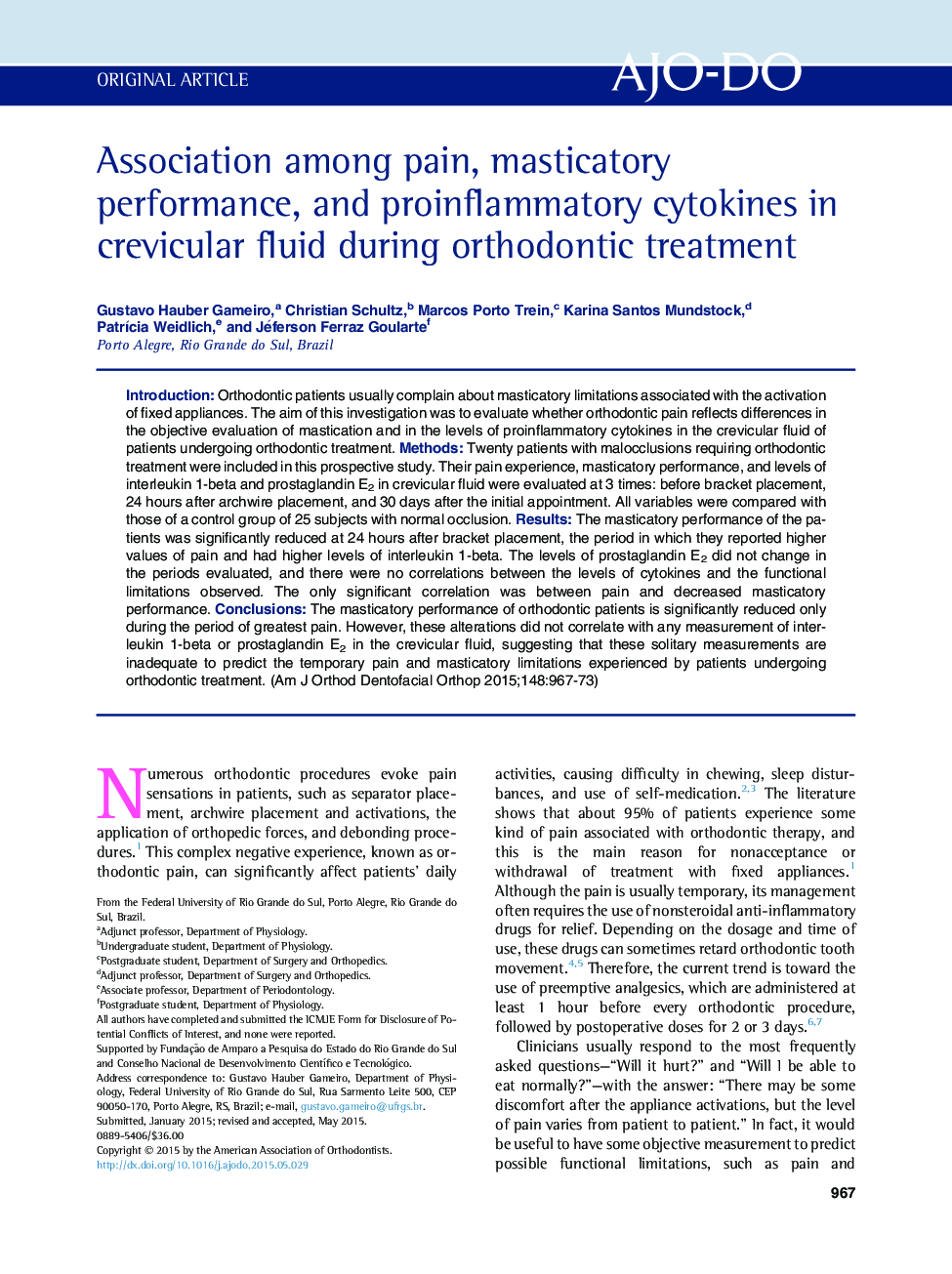| Article ID | Journal | Published Year | Pages | File Type |
|---|---|---|---|---|
| 3115263 | American Journal of Orthodontics and Dentofacial Orthopedics | 2015 | 7 Pages |
•Orthodontic pain is the main reason that patients decline treatment with fixed appliances.•Orthodontic pain can evoke significant objective and subjective responses in patients.•Patients exhibited significant increases in interleukin-1β after archwire placement.•Subjective pain and objective masticatory indexes were significantly correlated.•Pain-related biomarkers were not correlated with pain reports or masticatory indexes.
IntroductionOrthodontic patients usually complain about masticatory limitations associated with the activation of fixed appliances. The aim of this investigation was to evaluate whether orthodontic pain reflects differences in the objective evaluation of mastication and in the levels of proinflammatory cytokines in the crevicular fluid of patients undergoing orthodontic treatment.MethodsTwenty patients with malocclusions requiring orthodontic treatment were included in this prospective study. Their pain experience, masticatory performance, and levels of interleukin 1-beta and prostaglandin E2 in crevicular fluid were evaluated at 3 times: before bracket placement, 24 hours after archwire placement, and 30 days after the initial appointment. All variables were compared with those of a control group of 25 subjects with normal occlusion.ResultsThe masticatory performance of the patients was significantly reduced at 24 hours after bracket placement, the period in which they reported higher values of pain and had higher levels of interleukin 1-beta. The levels of prostaglandin E2 did not change in the periods evaluated, and there were no correlations between the levels of cytokines and the functional limitations observed. The only significant correlation was between pain and decreased masticatory performance.ConclusionsThe masticatory performance of orthodontic patients is significantly reduced only during the period of greatest pain. However, these alterations did not correlate with any measurement of interleukin 1-beta or prostaglandin E2 in the crevicular fluid, suggesting that these solitary measurements are inadequate to predict the temporary pain and masticatory limitations experienced by patients undergoing orthodontic treatment.
